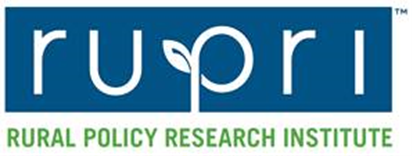- Submit Nominations for Partnership for Quality Measurement (PQM) Committees
- Unleashing Prosperity Through Deregulation of the Medicare Program (Executive Order 14192) - Request for Information
- Dr. Mehmet Oz Shares Vision for CMS
- CMS Refocuses on its Core Mission and Preserving the State-Federal Medicaid Partnership
- Social Factors Help Explain Worse Cardiovascular Health among Adults in Rural Vs. Urban Communities
- Reducing Barriers to Participation in Population-Based Total Cost of Care (PB-TCOC) Models and Supporting Primary and Specialty Care Transformation: Request for Input
- Secretary Kennedy Renews Public Health Emergency Declaration to Address National Opioid Crisis
- Secretary Kennedy Renews Public Health Emergency Declaration to Address National Opioid Crisis
- 2025 Marketplace Integrity and Affordability Proposed Rule
- Rural America Faces Growing Shortage of Eye Surgeons
- NRHA Continues Partnership to Advance Rural Oral Health
- Comments Requested on Mobile Crisis Team Services: An Implementation Toolkit Draft
- Q&A: What Are the Challenges and Opportunities of Small-Town Philanthropy?
- HRSA Administrator Carole Johnson, Joined by Co-Chair of the Congressional Black Maternal Health Caucus Congresswoman Lauren Underwood, Announces New Funding, Policy Action, and Report to Mark Landmark Year of HRSA's Enhancing Maternal Health Initiative
- Biden-Harris Administration Announces $60 Million Investment for Adding Early Morning, Night, and Weekend Hours at Community Health Centers
2022 County Total Population Estimates Released

The U.S. Census Bureau released today estimates of the total population as of July 1, 2022 at the county level which include both county totals as well as components of population change: births, deaths, and migration.
The Pennsylvania State Data Center’s latest brief explores changes in total county population from the April 1, 2020 Estimates Base to the July 1, 2022 Population Estimate. Key highlights include:
- Twenty-seven counties grew in population while forty declined
- Cumberland County remained fastest growing county since 2020 (+3.5%)
- Philadelphia (-36,541) and Allegheny (-17,332) counties saw largest losses
Click here to read more in this month’s brief.
National Community Health Center Workforce Survey Results Released
The National Network for Oral Health Access (NNOHA) published the results and analysis of their 2021 Community Health Center Workforce Survey. The purpose of the survey was to provide information and analysis on dental team member salaries, satisfaction, and recruitment and retention strategies in health centers throughout the country.
New Brief Released: Financial Risk Acceptance Among Rural Health Care Providers Participating in the Quality Payment Program
 This policy brief summarizes non-metropolitan and metropolitan health care providers’ participation in different tracks and subdivisions in the Centers for Medicare & Medicaid Services (CMS) Quality Payment Program and evaluates provider and patient-panel characteristics associated with financial risk acceptance.
This policy brief summarizes non-metropolitan and metropolitan health care providers’ participation in different tracks and subdivisions in the Centers for Medicare & Medicaid Services (CMS) Quality Payment Program and evaluates provider and patient-panel characteristics associated with financial risk acceptance.
Click here to open the full document.
New Reports Sent to Congress on Medicare and Medicaid Payment Policy
 The Medicare Payment Advisory Commission (MedPAC) and the Medicaid and CHIP Payment Advisory Commission (MACPAC) submit annual reports to Congress with analyses and recommendations from Commissioners on Medicare and Medicaid, respectively. In their March report, MedPAC highlights Medicare and total operating margins for rural and urban hospitals and recommends a new Medicare Safety Net Index to identify safety net hospitals and direct payments to them. MACPAC examines Medicaid’s Disproportionate Share of Hospital (DSH) payments to rural and urban hospitals.
The Medicare Payment Advisory Commission (MedPAC) and the Medicaid and CHIP Payment Advisory Commission (MACPAC) submit annual reports to Congress with analyses and recommendations from Commissioners on Medicare and Medicaid, respectively. In their March report, MedPAC highlights Medicare and total operating margins for rural and urban hospitals and recommends a new Medicare Safety Net Index to identify safety net hospitals and direct payments to them. MACPAC examines Medicaid’s Disproportionate Share of Hospital (DSH) payments to rural and urban hospitals.
New Key Findings Released on Crowded Housing and Housing Cost Burden by Disability, Race, Ethnicity, and Rural-Urban Location
 Among the key findings in this report from the University of Minnesota Rural Health Research Center: A higher proportion of urban adults (18.8 percent) live in crowded housing than rural adults (14.4 percent), with differences by race and ethnicity. Urban Hispanic adults have the highest proportion in crowded housing, followed by both rural Hispanic adults and rural American Indian adults.
Among the key findings in this report from the University of Minnesota Rural Health Research Center: A higher proportion of urban adults (18.8 percent) live in crowded housing than rural adults (14.4 percent), with differences by race and ethnicity. Urban Hispanic adults have the highest proportion in crowded housing, followed by both rural Hispanic adults and rural American Indian adults.
Assessing Geographic Variability in Key Indicators of Air Quality: A Rural vs. Urban Comparison of Pollution and Socio-Economic Factors
 This study from the Rural and Minority Health Research Center examines rates of air pollution between rural and urban census tracts.
This study from the Rural and Minority Health Research Center examines rates of air pollution between rural and urban census tracts.
HHS Climate Pledge Reopens
 The initiative, launched by the U.S. Department of Health & Human Services last April, asks hospitals, health systems, and other industry stakeholders to make efforts to reduce greenhouse gas emissions and increase their communities’ climate resilience. The pledge is one part of a larger HHS effort to consider the impact that climate change has on the entire country and take steps toward sustainability. A recent article in The Appalachian Voice describes the impact of climate change in rural mountain communities. Watch a video that explains what the healthcare sector can do and sign the pledge by Wednesday, April 12 to be recognized in an Earth Day announcement.
The initiative, launched by the U.S. Department of Health & Human Services last April, asks hospitals, health systems, and other industry stakeholders to make efforts to reduce greenhouse gas emissions and increase their communities’ climate resilience. The pledge is one part of a larger HHS effort to consider the impact that climate change has on the entire country and take steps toward sustainability. A recent article in The Appalachian Voice describes the impact of climate change in rural mountain communities. Watch a video that explains what the healthcare sector can do and sign the pledge by Wednesday, April 12 to be recognized in an Earth Day announcement.
FCC Publishes Request for Comment on Proposed Changes to the Universal Service Rural Health Program
 In January, the Federal Communications Commission (FCC) adopted an order and further notice of proposed rulemaking (FNPRM) (FCC 23-6) to amend Universal Service Rural Health Care (RHC) Program rules. The order restored the method of calculating rural and urban rates as it existed before the adoption of the 2019 Rule and Order that created a rates database. It also simplified invoicing procedures and altered priority rules if the program cannot fully fund all applications submitted. The FNPRM sought comment on new application data collection plans to verify that the requested support is consistent with prevailing charges for similar telecommunications services in the area. It also proposed capping support for satellite service at the level of terrestrial service, proposes changes to expedite new healthcare provider review, and proposed other changes to streamline the application process. The order and FNPRM were published in the Federal Register on March 23, 2023, starting a 30-day public comment period (ending April 24, 2023) and a subsequent 30-day reply comment period (ending May 22, 2023) for people to comment on other filer’s comments. Interested parties may comment in the Electronic Comment Filing System (ECFS) under WC Docket No. 17-310 at: https://www.fcc.gov/ecfs/filings/standard
In January, the Federal Communications Commission (FCC) adopted an order and further notice of proposed rulemaking (FNPRM) (FCC 23-6) to amend Universal Service Rural Health Care (RHC) Program rules. The order restored the method of calculating rural and urban rates as it existed before the adoption of the 2019 Rule and Order that created a rates database. It also simplified invoicing procedures and altered priority rules if the program cannot fully fund all applications submitted. The FNPRM sought comment on new application data collection plans to verify that the requested support is consistent with prevailing charges for similar telecommunications services in the area. It also proposed capping support for satellite service at the level of terrestrial service, proposes changes to expedite new healthcare provider review, and proposed other changes to streamline the application process. The order and FNPRM were published in the Federal Register on March 23, 2023, starting a 30-day public comment period (ending April 24, 2023) and a subsequent 30-day reply comment period (ending May 22, 2023) for people to comment on other filer’s comments. Interested parties may comment in the Electronic Comment Filing System (ECFS) under WC Docket No. 17-310 at: https://www.fcc.gov/ecfs/filings/standard
A Recent Survey of State Policies on Medicaid Unwinding Has Been Released
 This report presents findings from a survey of state Medicaid and CHIP program officials conducted by Kaiser Family Foundation and the Georgetown University Center for Children and Families on actions states are taking to prepare for the lifting of the Medicaid continuous enrollment provision (aka unwinding), as of January 2023. The report summarizes state policies on outreach to enrollees, staff capacity, and plans to monitor the impact of the unwinding on enrollment, and the tables show state-level policies on these issues. Nearly a quarter of individuals under age 65 who live in rural areas are covered by Medicaid.
This report presents findings from a survey of state Medicaid and CHIP program officials conducted by Kaiser Family Foundation and the Georgetown University Center for Children and Families on actions states are taking to prepare for the lifting of the Medicaid continuous enrollment provision (aka unwinding), as of January 2023. The report summarizes state policies on outreach to enrollees, staff capacity, and plans to monitor the impact of the unwinding on enrollment, and the tables show state-level policies on these issues. Nearly a quarter of individuals under age 65 who live in rural areas are covered by Medicaid.
Read About JAMA Viewpoint: The Emergence of Rural Emergency Hospitals
 An open-access opinion in the online Journal of the American Medical Association (JAMA Network) examines the new federal designation that would convert eligible rural hospitals to facilities that exclusively provide emergency and outpatient services. The authors identify potential benefits that may prevent closure of a growing number of at-risk hospitals. They also describe a number of potential unintended consequences that will need to be monitored, such as increasing the difficulty of recruiting and retaining rural clinicians.
An open-access opinion in the online Journal of the American Medical Association (JAMA Network) examines the new federal designation that would convert eligible rural hospitals to facilities that exclusively provide emergency and outpatient services. The authors identify potential benefits that may prevent closure of a growing number of at-risk hospitals. They also describe a number of potential unintended consequences that will need to be monitored, such as increasing the difficulty of recruiting and retaining rural clinicians.
